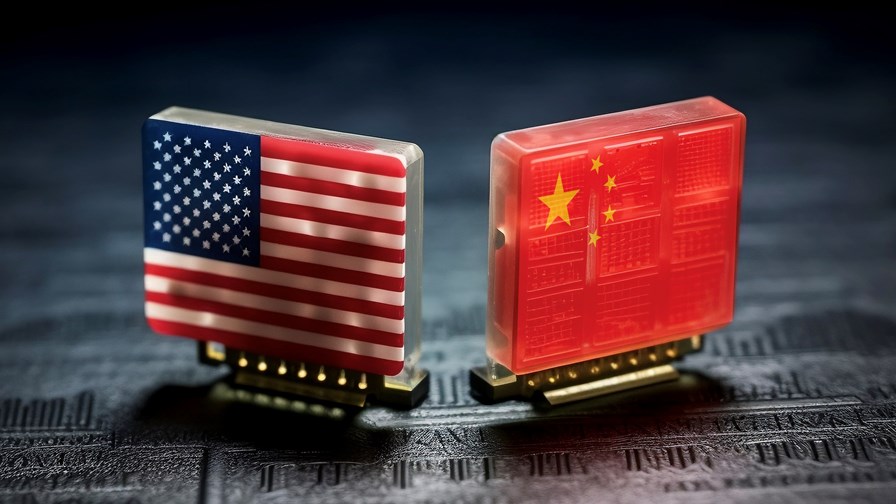
- A global fracturing of digital service provider (DSP) ecosystems looks possible as China and the US intensify their tit-for-tat blockings, bannings and technology circumventions
- Chinese companies, including Huawei, have developed and are using home-grown technology that is rapidly gaining ground on international alternatives in terms of capabilities
- China’s authorities are now urging domestic companies to actively eschew some foreign tech in favour of home-grown offerings – a slippery slope beckons
In what was always going to be a possible outcome of the new multi-faceted confrontation between the US and China, a cleaving of the world’s technology and services market into rival camps with important standards differences and incompatible advanced IT platforms is looking increasingly likely.
The most recent indication of such fragmentation comes in the market for the high-performance chips used to train and maintain AI models – the crucial technology battleground of the next few decades.
Recent reports suggest the Chinese authorities are “discouraging” domestic companies from purchasing Nvidia’s H20 chips (widely used for both developing and operating AI models) in favour of domestically developed alternatives, with a view to boosting China’s AI prospects.
The H20 processors aren’t Nvidia’s most powerful chips, just the most powerful that Nvidia can sell to China under current US export restrictions – and that’s the point. This sort of restriction and response is the very thing that could soon rip a rift up and down the protocol stack.
At this point the discouragement is framed as “guidance” but that could harden into prohibition over time if progress by China’s domestic players is deemed too slow.
Currently, China appears to be making good progress on its chip development despite the obstacles. The Institute of AI at China Telecom, one of the country’s big three telecoms operators, recently reported that it is already using tens of thousands of domestically produced AI chips – presumed to be Ascend processors from Huawei – to train its open-source TeleChat2-115B large language model.
So AI chip progress appears to be ongoing with Huawei’s latest AI-targeted Ascend 910c being compared to the current “gold standard” Nvidia N20. The 910c is being tested by the likes of ByteDance and Baidu, and is due to start shipping in volume (tens of thousands of chips) this month.
In fact, Huawei and the Chinese government are walking a tightrope here: On the one hand they want to enable more and better domestic AI chip development (who doesn’t?), but at the same time they need to avoid precipitating stronger sanctions that would make life even more difficult for China’s emerging generative AI (GenAI) sector, which still relies on access to at least some US chips.
It’s a similar tightrope story with the Chinese devices industry, where Huawei is attempting to develop advanced processors for its smartphones but is being somewhat stymied by a US block on the importation of the extreme ultraviolet, 3 to 5 nanometer lithography (EUV) machines that could give its chips the processing power to match its smartphone competitors.
In response, Huawei is following a “make do and mend” strategy – until it can get its mitts on, or develop its own, 3 to 5 nanometer technology – by innovating and adapting its 7 nanometer processes to squeeze out improved chip performance for its 5G smartphones.
That strategy appears to have been reasonably successful, especially in China, where the company’s Kirin 9000 chips have performed well enough to win domestic smartphone sales for Huawei’s Mate 60 smartphones.
While well received, those chips couldn’t quite match the performance of current smartphones powered by Qualcomm Snapdragon chips. With the upcoming Kirin 9010, 12-core processor, however, some sort of rough equivalence may be in sight.
The other notable smartphone development is that Huawei has properly freed itself from Google’s smartphone operating system. Its replacement – Harmony OS – has more than 10,000 applications ready to be accessed the moment the OS is distributed, claims Huawei.
It’s fairly clear that China, while sustaining a range of flesh-wounds, has not had its telecom industry decapitated by US sanctions and will look to take its homegrown technology to friendly markets around the world, of which there are still plenty – witness the announcement this week that Huawei is playing a key role in the development of AI-enabled cloud services in Egypt).
If anything, it has been stung into a determined long-view strategy of developing its key technologies domestically while trying to keep remaining links and dependencies open and functioning to benefit both sides. For instance, Huawei and other Chinese companies remain staunch supporters of mobile telecom standards and the GSMA industry body: Huawei’s success with 5G infrastructure sales played a large part in the Trump administration’s moves to apply sanctions to prevent Huawei from becoming too big a threat (in more ways than one) to the US.
Whether or not Huawei and China’s other tech giants manage to either break free from, or successfully swerve around, US sanctions, it’s becoming clear that trying to maintain dominance by bludgeoning an adversary with sanctions doesn’t seem to work, as their US advocates thought they might.
The end result right now looks like a world that’s going to drift away from global technology harmony and become a fragmented market characterised by competing and incompatible specifications and systems – and that doesn’t sound much like a good outcome for anyone.
– Ian Scales, Contributing Editor, TelecomTV
Email Newsletters
Sign up to receive TelecomTV's top news and videos, plus exclusive subscriber-only content direct to your inbox.




